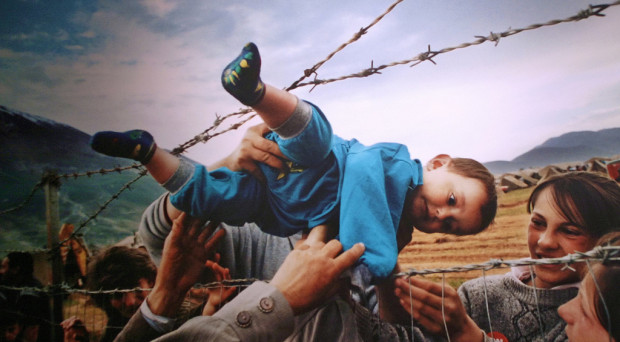This post was co-written with Natasha Salaria.
World Refugee Day is a chance to recognize the rapidly growing number of people who have had to flee their homes and countries. It was first marked in 2001, the 50th anniversary of the 1951 Convention relating to the Status of Refugees. Since then, the day has been marked with a mix of events from over 100 countries with involvement from government officials, humanitarian workers, researchers, and the refugees themselves.
Although migration is a global phenomenon, refugees are not to be confused with migrants. Migrants are those who move by choice, in order to improve their economic prospects or improve their lives.
In 2014 one person of every 122 in the world was forcibly displaced.
When discussing refugees, we are referring to people have been forcibly displaced, having no choice but to leave in order to save their lives, escape from war and/or fight for their human rights. At present half of the world’s refugees are from Syria, Somalia and Afghanistan.
In 2014 one person of every 122 in the world was forcibly displaced. Watch this video from the UN High Commissioner for Refugees (UNHCR) to learn more:
Research on refugees and health
Not only are these figures disheartening, they have massive implications for the provision of health care and on the quality of life of millions of people worldwide.
From the health status of older refugees from Syria in Lebanon, to the importance of antenatal care, we’ve picked out the following articles from Conflict and Health to shed some light on what the needs of those who are displaced are.
Antenatal care
Earlier this year, Benage et al. published a paper on the state of antenatal care for Syrian refugees. After more than three years of violence in Syria, Lebanon hosts over one million people displaced from Syria.
Antenatal care is essential to pregnant Syrian refugee women, and is vital in preventing mortality for both mother and baby. This study details the standards of care not being met for pregnant Syrian refugee women with only 41% having an adequate diet of vitamins, minerals and folic acid .
Neuropychiatric problems
A study by McKenzie et al. confirmed that neuropsychiatric disorders are a significant burden to health among Iraqi and Syrian refugees. The researchers wanted to understand the costs of care for people with these disorders, and so analyzed applications for United Nations-funded care.
Their analysis showed that the total amount requested to treat neuropsychiatric illness was 925,674 USD, with schizophrenia noted as the most costly and frequent diagnosis.
The health needs of older regugees
A study by Strong et al published in April sought to characterize the physical and emotional conditions, dietary habits, coping practices, and living conditions of the elderly population arriving in Lebanon from Syria between March 2011 and March 2013.
It found that 87% of older refugees had difficulties affording medicines and two-thirds described their health status as poor or very poor. Most reported at least one non-communicable disease, with 60% having hypertension, 47% diabetes, and 30% some form of heart disease.
The researchers also found that diet was regularly inadequate for older refugees. Often this was because they wished to provide more food to younger family members. Unsurprisingly, anxiety was also heavily reported.
Reproductive health
Finally, a study published in February by Krause et al. looked at reproductive health services for Syrian refugees. Between 2002 and 2004, the ‘Inter-agency Working Group’ (IAWG) undertook an evaluation of reproductive health for refugees and internally displaced persons. This was in order to determine when and where services were provided and to identify gaps and challenges to better target resources and interventions.
The findings revealed significant progress since 1995 in raising awareness and advancing reproductive health services for conflict-affected populations, particularly those in stable refugee camps. However, major gaps were present, including for gender-based violence, HIV/AIDS, sexually transmitted infections, safe motherhood, and family planning, as well as youth-friendly services and services that encouraged male involvement.
You can join us on Twitter @GHWindow to get involved in the discussion for #worldrefugeeday

Comments